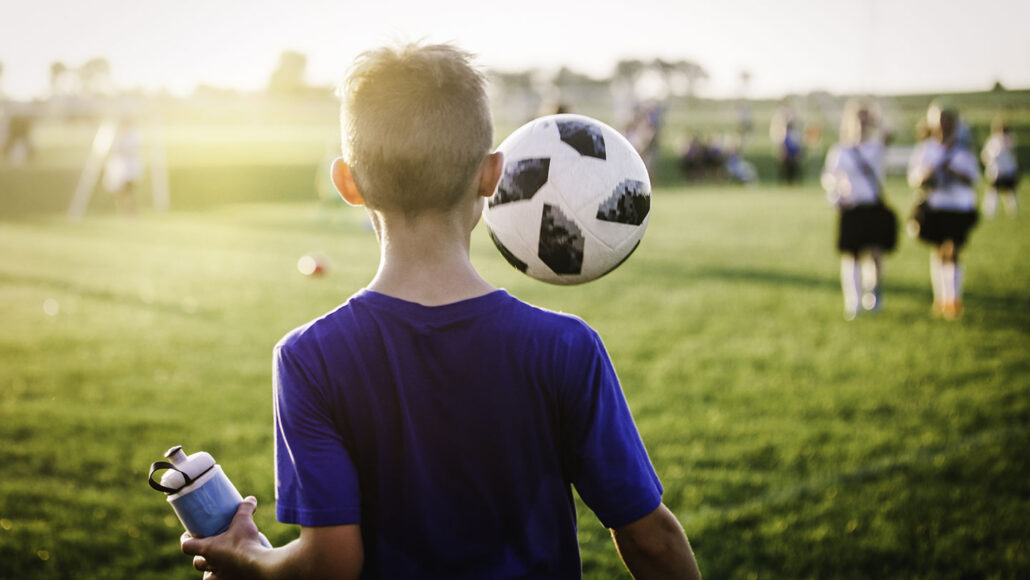Questions for ‘How to be heat-safe when playing sports’

In hot, humid conditions, many young athletes are at risk of overheating. Hydration, breaks and other strategies can help keep players safe.
Rebecca Nelson/ DigitalVision/Getty Images
To accompany ‘How to be heat-safe when playing sports’
SCIENCE
Before Reading:
- Imagine you are playing sports on a hot day. Describe one way your body cools you down when you get too hot. What symptoms would be a clue to you that you are becoming dangerously overheated? What should you do in response?
- Which sport do you think has the greatest trouble with athletes overheating? Identify two factors that contribute to overheating for this sport. Hint: For example, you could describe weather-related factors, the types of clothing worn or something else altogether.
During Reading:
- In the story, what symptoms was Theo experiencing that caused him to go down on one knee? What caused those symptoms?
- How does artificial turf compare with grass in terms of heat absorption?
- Approximately how many U.S. high-school athletes get sick from heat each year?
- What does WBGT stand for? What factors does WBGT take into account?
- List the three categories into which the United States is divided regarding regional climate differences. In which of these is summer heat often extreme?
- When things get hot, what is the body’s “first line of defense”?
- What are the symptoms of heat exhaustion? What should you do if you are playing a game and experience any of these symptoms? What should you tell your coach or parents? What could happen when someone has a heat stroke?
- Which sport has the most heat-related deaths in youth sports in the United States?
- Why is drinking water essential for controlling body temperature? What problem arises if you are dehydrated and overheating?
- What is the purpose of “14-day adaptation plans” in the United States? In one 2016 study, how did the number of heat-related deaths compare before and after implementing this adaptation plan?
- Identify one organization that has offered suggestions for adapting sports to increasingly hot temperatures. Describe one such suggestion.
After Reading:
- Imagine you are playing in an important sports tournament and your teammate tells you that they feel dizzy and like they may throw up. You notice your teammate’s face is flushed and very sweaty. What health concerns might you have for this teammate? What advice would you give to this athlete? What are some actions that should be taken to help your friend?
- If we make no changes in how we approach heat-related illness in sports, is the number of athletes who suffer heat-related illness likely to increase, decrease or remain the same over the next 10 years? Explain your answer.
- Imagine someone tells you that the best way to handle heat exhaustion in a sports game is to “tough it out.” What does this person not understand about heat-related illness? What would you say to this person to help them understand? Use findings from this story to support your response. What health problems could this person encounter in the future if their misconception isn’t addressed and they take their own advice?